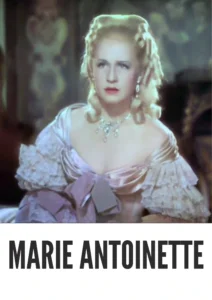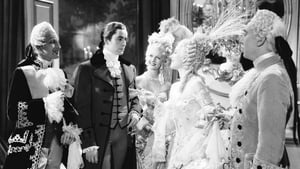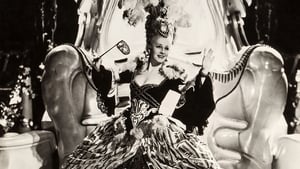Video Sources 0 Views

Synopsis
Love, Loss, and Revolution: Marie Antoinette (1938) in Vibrant Color

Immerse yourself in the opulent and tragic world of Marie Antoinette, the 1938 historical drama, now magnificently colorized for a breathtaking viewing experience. Starring Norma Shearer as the ill-fated queen and Tyrone Power as her charming love interest, this film, also known as Queen Marie Antoinette, brings the lavishness and turmoil of the French court to life. Perfect for lovers of historical epics and classic romance, this HD download offers a visually stunning journey into one of history’s most captivating stories.
Marie Antoinette Storyline: From Versailles to Revolution
Marie Antoinette follows the life of the titular Austrian princess (Norma Shearer) as she is betrothed to the Dauphin of France (Louis XVI), played by Robert Morley. Thrust into the extravagant and gossipy court of Versailles, she struggles to adapt to the rigid customs and political intrigues.As Marie Antoinette navigates her role as queen, she faces criticism for her lavish spending and perceived indifference to the plight of the French people. Her relationship with the charming Swedish Count Axel von Fersen (Tyrone Power) further complicates her position. As discontent grows among the populace, the French Revolution erupts, threatening to destroy everything she holds dear. Marie Antoinette is a sweeping epic that explores themes of love, loss, and the consequences of unchecked power, set against the backdrop of one of history’s most tumultuous periods.
Movie Cast
The film features a stellar cast of actors who bring this historical drama to life:
- Norma Shearer as Marie Antoinette
- Tyrone Power as Count Axel von Fersen
- John Barrymore as King Louis XV
- Robert Morley as King Louis XVI
- Anita Louise as Princesse de Lamballe
Movie Genre
Marie Antoinette falls into the genre of historical drama, with elements of romance and tragedy that are characteristic of classic Hollywood epics. Its grand scale, elaborate costumes, and emotional depth make it a captivating and unforgettable film.
Historical Context: Golden Age Hollywood and Historical Epics
Released in 1938, Marie Antoinette represents a high point in Hollywood’s production of lavish historical dramas. The film was made during a period when studios had the resources and ambition to create large-scale productions that transported audiences to different eras and locales. While historical accuracy may not have been the sole priority, these films offered a romanticized and dramatic interpretation of historical events. Marie Antoinette, though not without its historical liberties, provides a glimpse into the values and aesthetics of Hollywood’s Golden Age.
Colorization Details
This colorized version of Marie Antoinette has been meticulously restored using modern digital techniques, enhancing the visual splendor while preserving the film’s original grandeur. The colorization process involved carefully analyzing the grayscale tones of the original black and white footage and assigning appropriate colors to each scene. While the specific software used remains proprietary, the techniques employed included advanced algorithms for color palette selection and image enhancement. This painstaking process brings new life to the characters and settings, making the story even more engaging for modern audiences. Whether you embrace or question the colorization of classic films, it introduces these films to a broader audience, ensuring their legacy for future generations.
Technical Details
- Director: W.S. Van Dyke
- Screenplay: Donald Ogden Stewart, Ernest Vajda, Claudine West
- Based on: the book by Stefan Zweig
- Cinematography: William H. Daniels
- Edited by: Ben Lewis
- Production Company: Metro-Goldwyn-Mayer (MGM)
- Distributed by: Metro-Goldwyn-Mayer (MGM)
- Runtime: 149 minutes
Technical Specifications
- Download Format: MP4
- Resolution: HD (1080p)
- Compatibility: Compatible with most devices, including smartphones, tablets, computers, and smart TVs.
Reviews and Critical Reception
Marie Antoinette (1938) is celebrated for its lavish production design, costume design, and the performances of its cast, particularly Norma Shearer in the title role. While the film has been praised for its visual spectacle and emotional impact, it has also faced criticism for its historical inaccuracies and romanticized portrayal of Marie Antoinette. As a product of Hollywood’s Golden Age, Marie Antoinette remains a compelling and visually stunning cinematic experience.
FAQs
- Q: What is Marie Antoinette about?
- A: Marie Antoinette is a historical drama about the life of the Queen of France, from her arrival at Versailles to the French Revolution.
- Q: Is Marie Antoinette (1938) historically accurate?
- A: While visually stunning, the film takes liberties with historical facts and should be viewed as a romanticized interpretation of events.
- Q: Is this version of Marie Antoinette colorized?
- A: Yes, this version has been professionally colorized to enhance the viewing experience.
- Q: What makes Marie Antoinette interesting for classic film fans?
- A: Marie Antoinette offers a glimpse into Hollywood’s Golden Age of filmmaking, with its lavish sets, costumes, and star-studded cast.
- Q: What is the download format?
- A: The download format is MP4, which is compatible with most devices.
- Q: What resolution is the download?
- A: The resolution is HD (1080p), providing a high-quality viewing experience.
Download Now in HD!
Watch Marie Antoinette Today!












